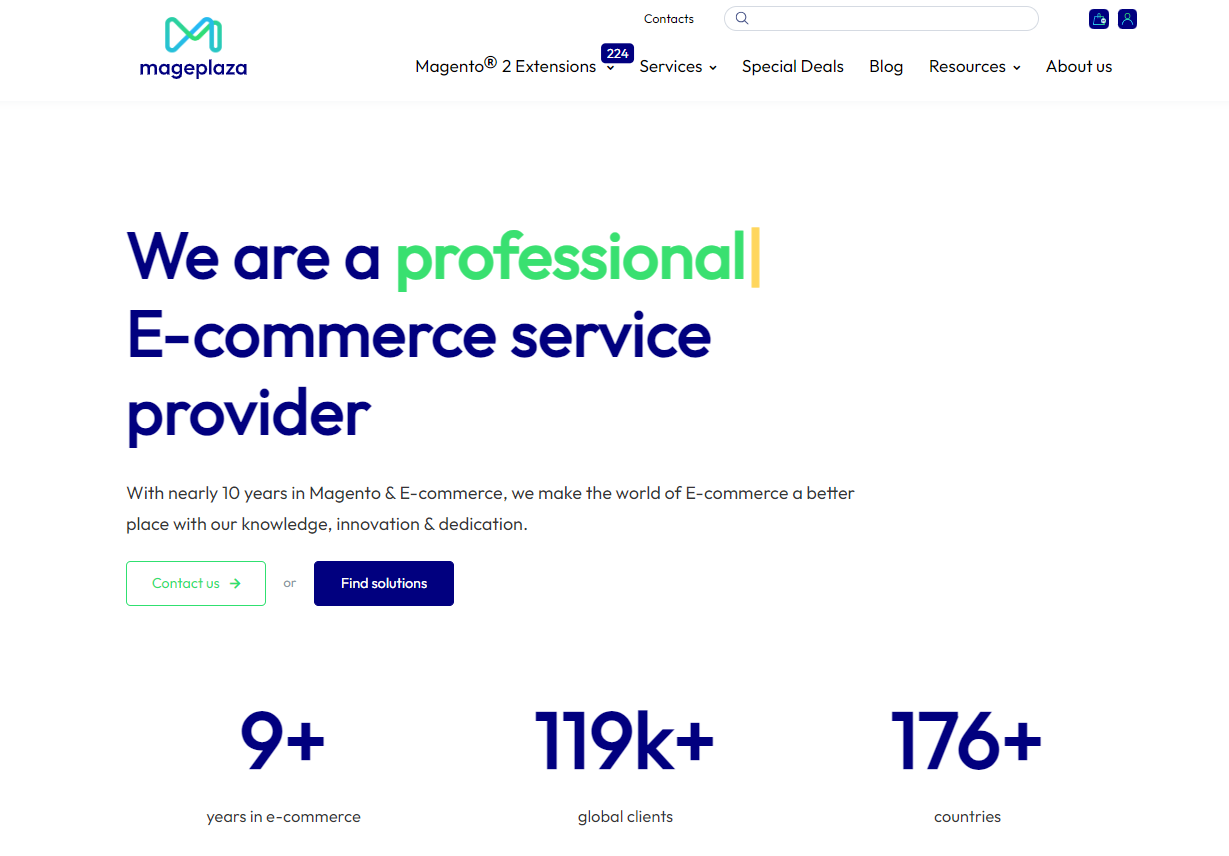How to Hire Dedicated Front-End Developers: Step-by-Step
Unlocking the potential of a captivating and user-friendly website begins with the expertise of dedicated front-end developers. These specialists play a pivotal role in creating seamless user experiences that engage and convert visitors into loyal customers.
But how do you find and hire dedicated front-end developers who align with your project’s goals and deliver exceptional results? In this comprehensive guide, we’ll take you through the step-by-step process of hiring dedicated front-end developers.
Let’s dive into discovering how to turn your digital vision into reality!
Table of Content
- What is a Dedicated Front-End Developer?
- What Does a Dedicated Front-End Developer Do?
- How Much Does It Cost to Hire Dedicated Front-End Developers?
- Step-by-Step Hiring Dedicated Front-End Developers
- How to Write a Job Description for Dedicated Front-End Developers
- Some Interview Questions When Hiring a Front-End Developer
- Hire Dedicated Front End Developers With Mageplaza
- Conclusion
What is a Dedicated Front-End Developer?
A dedicated front-end developer is a skilled professional crafting the visual and interactive aspects of websites, web applications, and software products. This role is crucial in delivering a seamless and engaging user experience by bringing a digital product’s creative and functional elements to life.
Front-end development refers to building a digital product’s user interface (UI) and user experience (UX) components. This involves creating the visual layout, designing the navigation and interactive features, and ensuring users can easily interact with the application.

Front-end developers collaborate closely with designers, back-end developers, and other relevant stakeholders to ensure the end product aligns with visual design and functional requirements.
What Does a Dedicated Front-End Developer Do?
A dedicated front-end developer is responsible for crafting digital products’ visual and interactive aspects, ensuring they are aesthetically pleasing, functional, and user-friendly. Their role contributes significantly to the success of a digital product by creating an engaging and delightful user experience.
Here’s a closer look at the tasks and responsibilities of a dedicated front-end developer:
- Coding and markup: Front-end developers are proficient in HTML, CSS, and often JavaScript. They use these languages to build web page structure, layout, and styling. This involves translating design mockups or wireframes into functional code.
- Responsive design: They ensure the user interface adapts and looks appealing on various screen sizes and devices, such as desktops, tablets, and smartphones. This is achieved through responsive design techniques and media queries.
- User experience (UX) design: Front-end developers contribute to the user experience by implementing intuitive navigation, interactive elements, animations, and transitions. They focus on making the user journey smooth and enjoyable.

- Cross-browser compatibility: Digital products should work consistently across web browsers like Chrome, Firefox, Safari, and Edge. Front-end developers test and adjust their code to ensure the application functions correctly and appears consistent across these platforms.
- Performance optimization: They work to improve the loading speed and performance of web pages. This might involve optimizing images, minimizing code, and employing caching techniques to enhance the user experience.
- Collaboration: Front-end developers collaborate closely with designers, back-end developers, and other team members. They ensure that the final product aligns with design and functional requirements and that front-end and back-end components integrate seamlessly.
- Accessibility: They follow web accessibility guidelines to create inclusive experiences for people with disabilities. This involves using proper HTML semantics, providing alternative text for images, and ensuring that interactive elements are navigable via the keyboard.
- Version control: Front-end developers often use systems like Git to manage code changes, collaborate effectively, and maintain a work history.
- Staying updated: As technology and best practices evolve, Dedicated Front-end developers continually learn and adopt new tools, frameworks, and techniques to stay current in the rapidly changing field of front-end development.
- Debugging and problem-solving: Front-end developers diagnose and fix problems to ensure a smooth user experience when user interface or functionality issues arise.
- UI component libraries: They may create or utilize UI component libraries and frameworks (e.g., React, Angular, Vue.js) to streamline development and maintain consistency across the application.
- User testing and feedback: They might participate in user testing and gather feedback to identify areas for improvement in the user interface and experience.
- Optimizing for SEO: Front-end developers often implement SEO best practices to ensure that websites and applications are search-engine-friendly and rank well in search results.
How Much Does It Cost to Hire Dedicated Front-End Developers?
The cost of hiring a dedicated front-end developer ranges from $15,000 – $180,000+ per year. This can vary significantly based on their experience level, expertise, location, and the specific requirements of your project. Here’s a general overview of the cost ranges for hiring junior, middle, and senior front-end developers:
Junior Front-End Developers
Junior developers typically have limited professional experience but are eager to learn and contribute. They might require more supervision and guidance.
Cost Range (per year):
- Global Average: $30,000 – $60,000
- North America/Europe: $40,000 – $70,000
- Asia/Africa/Latin America: $15,000 – $35,000
Middle Front-End Developers
Middle-level front-end developers have a few years of experience and can work more independently. They are capable of handling moderately complex tasks and projects.
Cost Range (per year):
- Global Average: $60,000 – $90,000
- North America/Europe: $70,000 – $110,000
- Asia/Africa/Latin America: $30,000 – $60,000
Senior Front-End Developers
Senior front-end developers have extensive experience and a deep understanding of front-end technologies. They can lead projects, mentor junior developers, and handle complex tasks with minimal supervision.
Cost Range (per year):
- Global Average: $90,000 – $150,000+
- North America/Europe: $100,000 – $180,000+
- Asia/Africa/Latin America: $50,000 – $100,000+

In addition to the base salary, other factors to consider when budgeting for hiring front-end developers include:
- Benefits and perks: These can include health insurance, retirement plans, paid leave, and additional perks.
- Taxes and labor laws: Different countries have varying tax rates and labor laws that can impact the overall cost of hiring.
- Freelance/contract rates: If you’re considering hiring front-end developers on a freelance or contract basis, rates might differ and can be charged hourly or project basis.
When hiring remote front-end developers, especially from regions with lower living costs, you might find that you can access skilled professionals at a more affordable rate. However, it’s essential to ensure that the developers you hire, regardless of location, have the skills and expertise necessary to contribute effectively to your project.
Step-by-Step Hiring Dedicated Front-End Developers
Hiring dedicated front-end developers involves steps to ensure you find the right candidates who fit your project’s requirements and team dynamics. Here’s a step-by-step guide to help you through the process:
1. Define Requirements
When hiring dedicated front-end developers, the first critical step is to meticulously define the requirements for the position. This entails outlining the technical skills expected from the candidates and delving into the specifics of their experience and qualifications.
These could encompass proficiency in core front-end technologies such as HTML, CSS, and JavaScript and familiarity with popular frameworks like React or Vue.
Determining the appropriate experience level is equally crucial; deciding whether junior, mid-level, or senior developers are needed hinges on the complexity of projects and the existing team composition.
Clarifying the responsibilities tied to the role is paramount. This involves articulating the tasks developers will undertake, such as translating UI/UX designs into code, optimizing website performance, and collaborating closely with back-end teams.
Qualifications, both in terms of education and certifications, should be well-defined. Furthermore, emphasizing essential soft skills like effective communication, teamwork, problem-solving, and adaptability will help ensure a holistic understanding of the ideal candidate.
2. Post Job Opening
The process of hiring dedicated front-end developers necessitates creating a compelling job opening that accurately reflects the role’s nature and the company’s values. A comprehensive job description serves as the cornerstone of this endeavor.
In this description, it’s imperative to articulate the responsibilities that the developer will shoulder and provide insight into the broader company context. Presenting information about the company’s mission, culture, and the team dynamic the developer will be a part of can entice candidates who resonate with these aspects.
To facilitate the application process, it’s crucial to provide clear instructions for candidates on how to apply, including any relevant documents or information you require.
3. Screen Resumes
Screening potential candidates is a pivotal phase in hiring dedicated front-end developers.
Commencing with the review of submitted resumes, the focus should be on identifying candidates with relevant work experience, an appropriate educational background, and who align with the outlined requirements. Subsequently, reaching out to shortlisted candidates provides an opportunity for initial communication and further exploration.
4. Technical Assessment
Send a technical assessment to the shortlisted candidates. This could be a coding challenge or a set of questions to gauge their technical knowledge and problem-solving abilities related to front-end development.
The results of this assessment serve as a means of filtering candidates who exhibit strong technical capabilities. Thoroughly reviewing the assessment outcomes aids in pinpointing individuals who display the desired proficiencies that match the role.
5. Technical Interview
Once the initial screening has been completed, the technical interview phase begins. This step will delve deeper into the candidates’ technical abilities and problem-solving skills.
During the technical interview, candidates are often asked in-depth technical questions related to front-end development. These questions could cover topics such as HTML, CSS, JavaScript concepts, best practices, and their experience with relevant frameworks.

The goal is to assess their depth of understanding, ability to apply their knowledge to real-world scenarios, and problem-solving approach.
Technical interviews may also involve code review sessions, where candidates are asked to explain their code solutions, identify potential improvements, and defend their design decisions.
6. Practical Task
The practical task phase is a hands-on evaluation that allows candidates to showcase their practical skills. This can involve giving candidates a real-world scenario or problem they would likely encounter as a front-end developer.
Candidates might be asked to develop a small application, implement a specific feature, or fix a bug in an existing codebase. This task assesses their coding abilities, attention to detail, coding style, and ability to work independently.
It’s a chance for candidates to demonstrate their problem-solving skills tangibly and showcase their approach to project implementation.
7. Team Interview
The team interview is critical in evaluating candidates beyond their technical competencies. This interview involves interaction with members of the development team and other relevant stakeholders.
The focus here is on assessing cultural fit, collaboration skills, and how well candidates would integrate into the existing team dynamics. During this interview, candidates might be asked about their previous teamwork experiences, communication style, and ability to adapt to different work environments.
The team interview is an opportunity to ensure that candidates not only possess the technical skills needed but also align with the company’s values and can contribute positively to the team’s overall performance.
8. Offer and Onboarding
After successfully navigating through the assessment phases, the offer and onboarding stage comes into play. This phase entails presenting a job offer to the chosen candidate. The offer should include compensation, benefits, working conditions, and other pertinent information.
Once the candidate’s acceptance of the offer, the onboarding process begins. This includes completing the necessary paperwork, setting up accounts and access to company systems, introducing the new hire to the team, and providing them with an overview of the company’s policies, procedures, and culture.
Effective onboarding ensures the new front-end developer feels welcomed, informed, and ready to contribute effectively from day one.
How to Write a Job Description for Dedicated Front-End Developers
Writing an effective job description for dedicated front-end developers is crucial to attracting qualified candidates and providing them with a clear understanding of the role and expectations. Here are some things to include in the job description:
1. Required Qualifications, Experience, and Education
Outline the essential qualifications and background that candidates must have to be considered for the position. Be specific about technical skills, experience, and educational requirements. For example:
Required qualifications:
- Proficiency in HTML, CSS, and JavaScript.
- Experience with at least one modern front-end framework (React, Angular, Vue).
- Strong understanding of responsive design principles and cross-browser compatibility.
- Bachelor’s degree in Computer Science, Web Development, or related field.
Experience:
- Minimum of [X years] experience as a front-end developer.
- Proven track record of delivering high-quality code for web applications.
Education:
Necessitates a bachelor’s degree in Computer Science or a related field.
2. Desired Skills and Traits
In this section, mention additional skills, traits, or qualities that would benefit the role but are not mandatory. This can include soft skills, specific frameworks, or tools. For example:
Desired skills:
- Familiarity with RESTful APIs and asynchronous programming.
- Experience with front-end build tools (Webpack, Gulp).
- Strong problem-solving abilities and attention to detail.
Traits:
- Excellent communication and teamwork skills.
- Self-motivated with a passion for staying updated with industry trends.
3. Job Responsibilities
This section provides a detailed breakdown of the tasks and responsibilities the front-end developer will handle. Be specific about the role’s contributions to projects and the company’s overall goals. For example:
Job responsibilities:
- Collaborate with UI/UX designers to translate wireframes and designs into functional code.
- Develop responsive web interfaces that adhere to design specifications.
- Optimize application performance and ensure smooth user experiences.
- Take part in code reviews to uphold the quality of the code and ensure best practices.
- Debug and troubleshoot issues, providing timely solutions.
- Remain informed about emerging technologies and trends in front-end development.
4. Benefits

This section should highlight the company’s benefits to its employees. This can include tangible benefits like healthcare and intangible benefits like professional development opportunities. For example:
Benefits:
- Competitive salary and performance-based bonuses.
- Comprehensive health, dental, and vision insurance plans.
- Flexible work arrangements, including remote work options.
- Professional development budget for training and conferences.
- Collaborative and inclusive work environment.
5. Company info
Provide a brief overview of the company’s mission, values, and notable achievements. This section helps candidates understand your company’s culture and what makes it a great workplace. For example:
Company Info:
[Company Name] is a leading [industry/sector] company dedicated to [mission statement or key objective]. We pride ourselves on fostering innovation and providing a supportive environment for professional growth.
Our team comprises passionate individuals who strive for excellence in everything we do. Join us in shaping the future of [industry] and making a meaningful impact on the world.
Some Interview Questions When Hiring a Front-End Developer
Here are some interview questions you can use when hiring a front-end developer to assess their technical skills, problem-solving abilities, and overall fit for the role:
Explain the CSS box model and its significance in web layout design
The CSS Box Model establishes the structure of an HTML element in terms of its content, padding, border, and margin. It’s crucial in web layout design because it determines how elements are sized and spaced within a page. The box model helps maintain consistency in design and spacing across different elements.
How do you handle responsive design to ensure optimal user experience across different devices and screen sizes?
Responsive design encompasses the creation of a website that adjusts to varying devices and screen sizes. To achieve this, I employ CSS media queries to implement distinct styles depending on the viewport width. I design with a mobile-first approach, meaning I start by designing for smaller screens and progressively enhance for larger ones.
Flexbox and CSS Grid are valuable tools for crafting adaptable layouts that accommodate various screen sizes. Additionally, I test the design on various devices and use browser developer tools to ensure responsiveness and optimal user experience.
Can you describe the benefits and drawbacks of using a front-end framework like react, angular, or vue.js?
React:
- Benefits: Virtual DOM for efficient updates, strong community, and ecosystem, component reusability, JSX for declarative rendering.
- Drawbacks: Steeper learning curve, need to manage state and routing separately, tooling decisions required.
Angular:
- Benefits: Full-fledged framework with powerful features, two-way data binding, dependency injection, and strong TypeScript integration.
- Drawbacks: Heavier than other libraries, more complex syntax, slower initial rendering.
Vue.js:
- Benefits: Approachable learning curve, progressive framework, easy integration with existing projects, single-file components.
- Drawbacks: Smaller ecosystem, compared to React and Angular, might not be suitable for large-scale applications.
What techniques do you employ to optimize your website’s loading speed and rendering efficiency?
I focus on several techniques to optimize web page performance:
- Minimizing and compressing assets like CSS, JavaScript, and images.
- Using lazy loading for images and components that are not immediately visible.
- Employing browser caching and leveraging CDNs for faster content delivery.
- Minimizing the use of third-party scripts and only including what’s essential.
- Reducing the number of HTTP requests by using CSS sprites or combining resources.
- Implementing asynchronous loading of JavaScript to prevent blocking the rendering process.
- Analyzing performance using tools like Lighthouse or PageSpeed Insights and making iterative improvements.
Have you encountered challenges with cross-browser compatibility, and how did you address them?
Yes, cross-browser compatibility can be challenging due to differences in how browsers interpret and render HTML, CSS, and JavaScript. To address this:
- I use modern CSS features with fallbacks for older browsers and test on different browsers during development.
- I employ feature detection and polyfills to provide missing functionality in older browsers.
- Regular testing on different browsers and devices is essential to catch compatibility issues early.
- I pay attention to known browser quirks and issues and use CSS resets or normalizations to ensure consistent styling.
- I use tools like BrowserStack or CrossBrowserTesting to simulate different browser environments and identify and fix issues.
The answers can vary based on a candidate’s experience and approach, but these responses should give you a good sense of their knowledge and problem-solving skills as a front-end developer.
Hire Dedicated Front End Developers With Mageplaza
Prepared to enhance your online presence through a seamless and visually stunning user experience? Look no further! Unlock the power of Mageplaza’s dedicated front-end developers, who bring experience, industry best practices, and a focused approach to your projects.

Some of the benefits of recruiting front-end developers with Mageplaza are as follows:
- Experienced team: Mageplaza’s dedicated front-end developers have significant experience working with front-end technologies. Our expertise can contribute to high-quality, efficient, and effective front-end development.
- Time zone aligned: Time zone alignment can be a considerable advantage when working with Mageplaza’s dedicated team. If your business is in the same or a compatible time zone, communication and collaboration can be smoother, leading to faster response times and efficient project progress.
- Industry best practices: Dedicated front-end developers from Mageplaza are well-versed in the industry’s best practices for front-end development. This ensures your project follows established standards and results in a well-designed and functional user interface.
- Focused procedure: Mageplaza’s developers have a structured and well-defined approach to front-end development. This leads to a streamlined and organized development process, reducing the likelihood of missteps and enhancing project efficiency.
- Cost and time viability: Using Mageplaza’s dedicated front-end developers can be cost-effective and time-efficient compared to hiring and managing an in-house team. You can allocate time and resources to other important aspects of your business.
Don’t miss out on the opportunity to work with an experienced team that thrives on turning ideas into captivating digital realities. Elevate your website’s front end with Mageplaza’s expertise today!
Conclusion
Investing in dedicated front-end developers is an investment in your brand’s online success. This guide equips you with the tools to navigate the hiring process effectively.
By leveraging their expertise, you can create captivating user experiences that make a lasting impact in the ever-evolving digital realm. Here’s to a future filled with engaging, user-centered web solutions.

& Maintenance Services
Make sure your store is not only in good shape but also thriving with a professional team yet at an affordable price.
Get StartedNew Posts

Magento WordPress Integration Tutorial

The Dynamic Programming Language Behind Magento

A Comprehensive Exploration of Magento EAV Model
People also searched for
- 2.3.x, 2.4.x
Stay in the know
Get special offers on the latest news from Mageplaza.
Earn $10 in reward now!





